France - June 2016
Omaha Beach - East Side - Colleville-sur-Mer
|
|
From the American Cemetery parking lot, we walked down a path towards the beach. I didn't know it, but by pure luck, we were heading towards the WN62 strongpoint which was one of the most heavily defended spots on Omaha Beach.
Omaha Beach. Bloody Omaha. "The fighting on 'Bloody Omaha on D-Day, 6 June 1944, was the single costliest day of combat for U.S. forces in World War II. Casualties on Omaha Beach were 4,720 men; nearly as many as the other four beaches combined." -- Steve Zaloga: The Devil's Garden.
I'm sure everyone remembers the opening scene of the movie Saving Private Ryan. From everything I have read, that scene was probably quite accurate.
|
| |
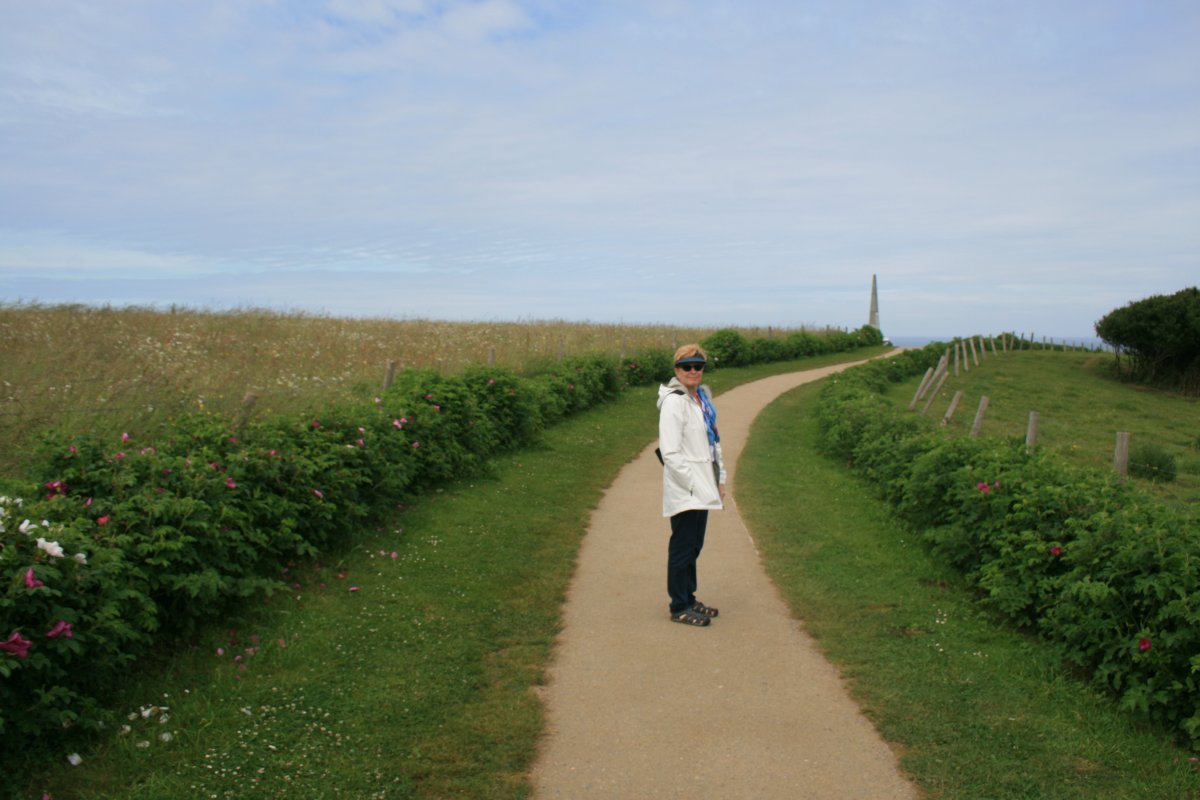 |
|
|
Soon we came across this memorial to the 1st Infantry Division, the Big Red One, whose 16th Regiment came ashore here in the first wave.
We are close to the east end of Omaha Beach, at the draw leading to Colleville sur Mer.
|
| |
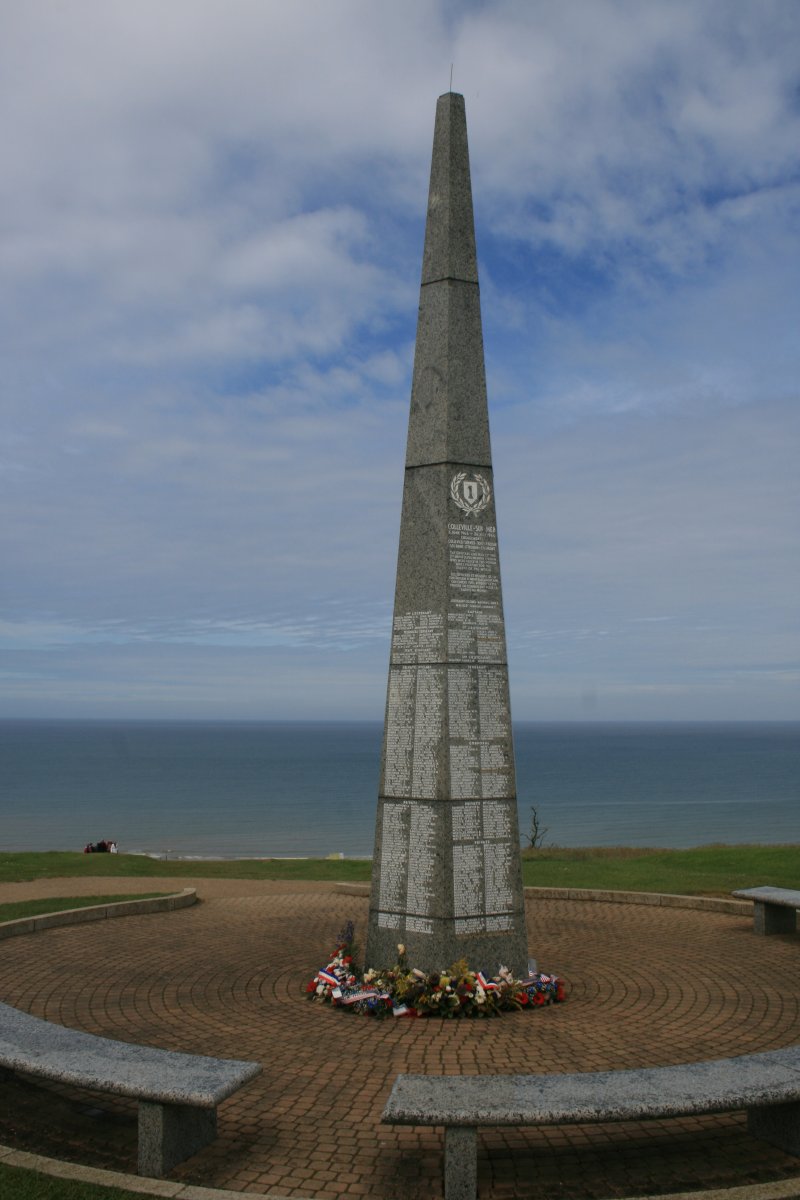 |
|
|
Looking east at one of the draws through the little town of Colleville-sur-Mer.
|
| |
 |
|
| The remnants of a Z-shaped trench is still visible. |
| |
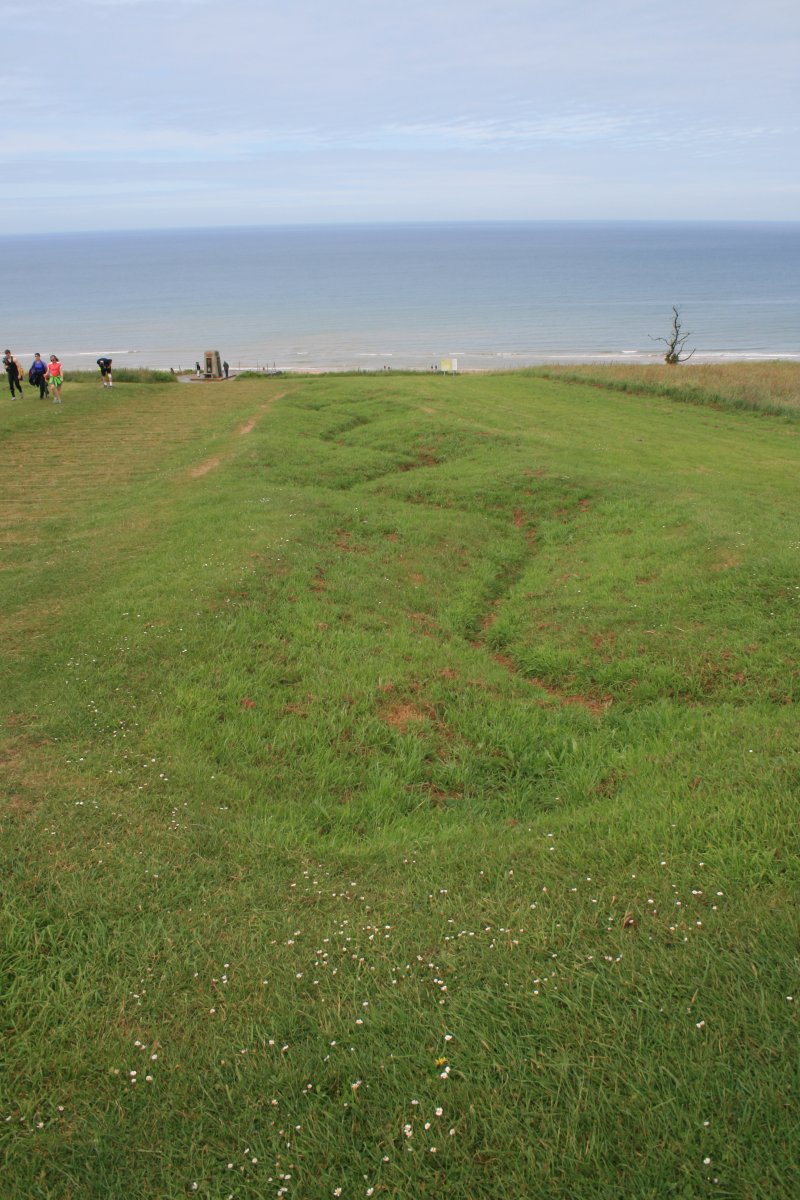 |
|
| Well-done placards like this were abundant. The writing was in both French and English. The Zig-zag trench above is displayed in the lower-left of the diagram below. |
| |
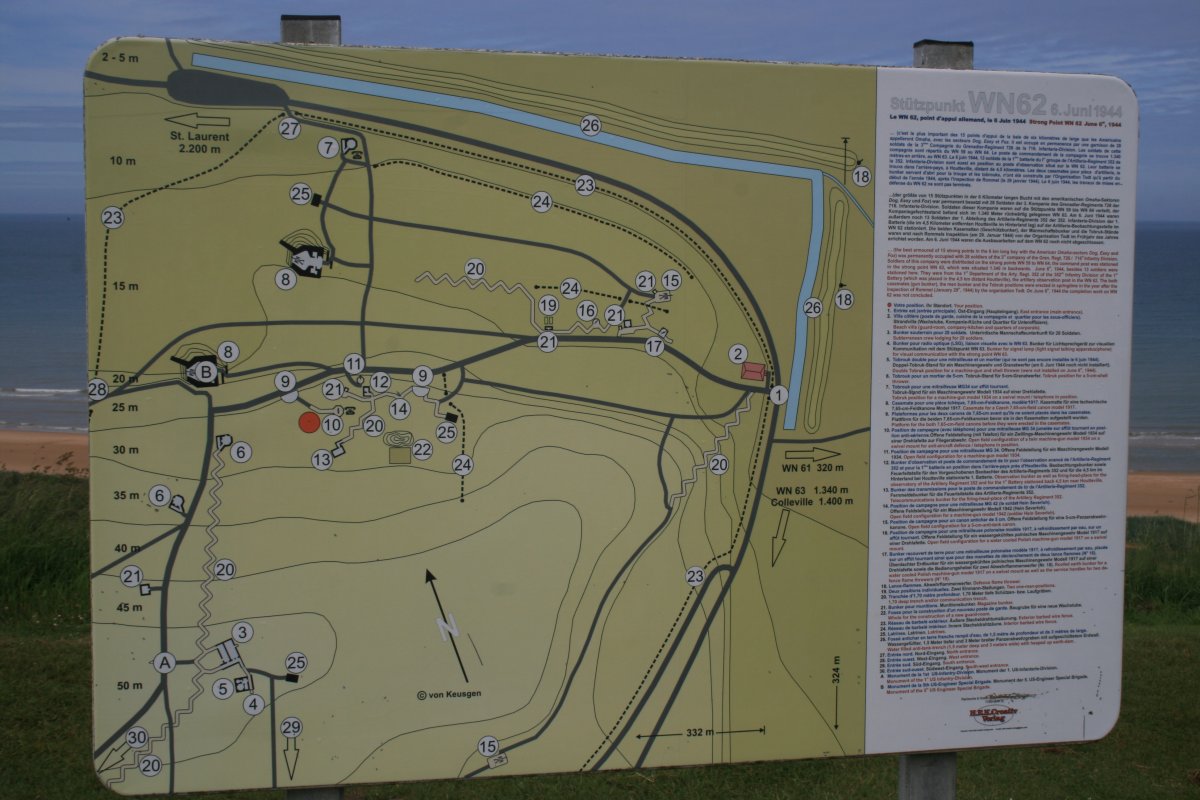 |
|
|
A memorial to the 5th Engineer Special Brigade sits atop one of the two German R669 gun bunkers which were part of defense nest WN62. The 5th Engineers came ashore here in the first wave.
|
| |
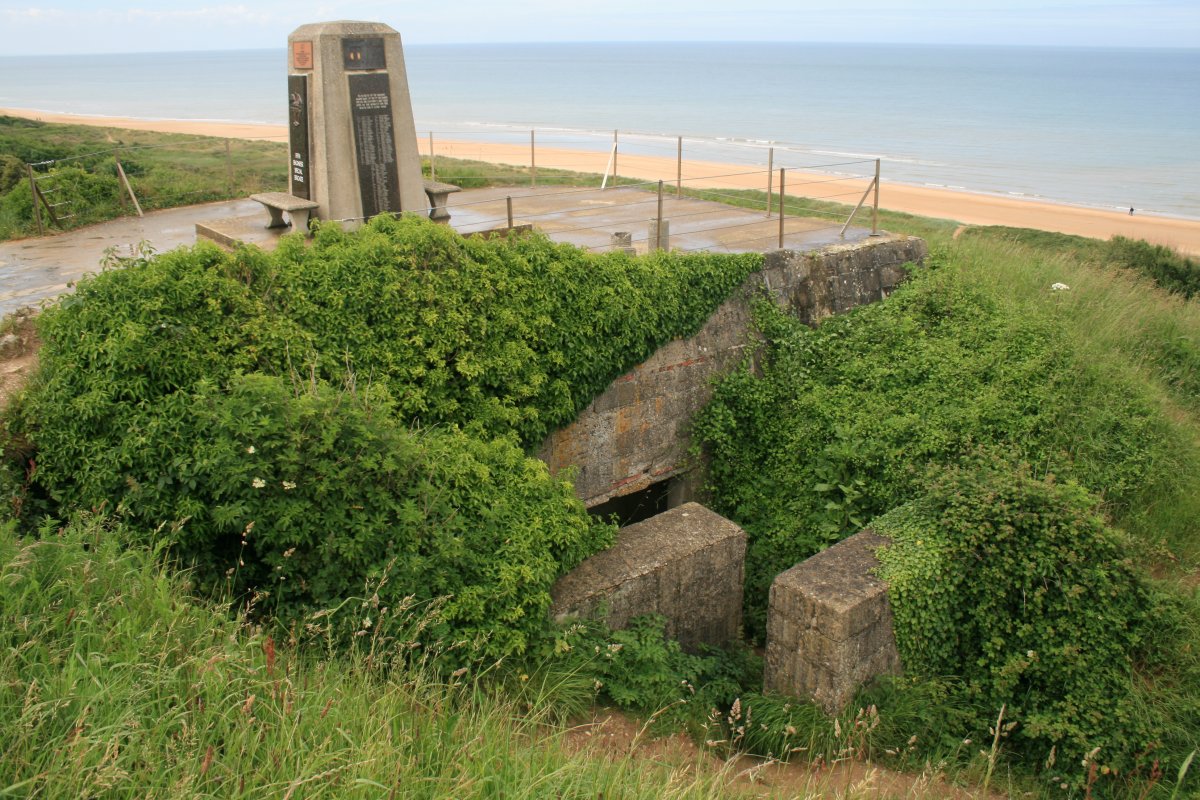 |
|
|
The naval bombardment was way too short and did little damage to the beach defenses. Because of low cloud cover, the aerial bombardment was completely ineffective. So in effect, the German defenses were sitting undamaged and at full strength when the first Americans came ashore. Plus the Allies did not know of the presence of the German 352 Infantry Division with most of its artillery.
|
| |
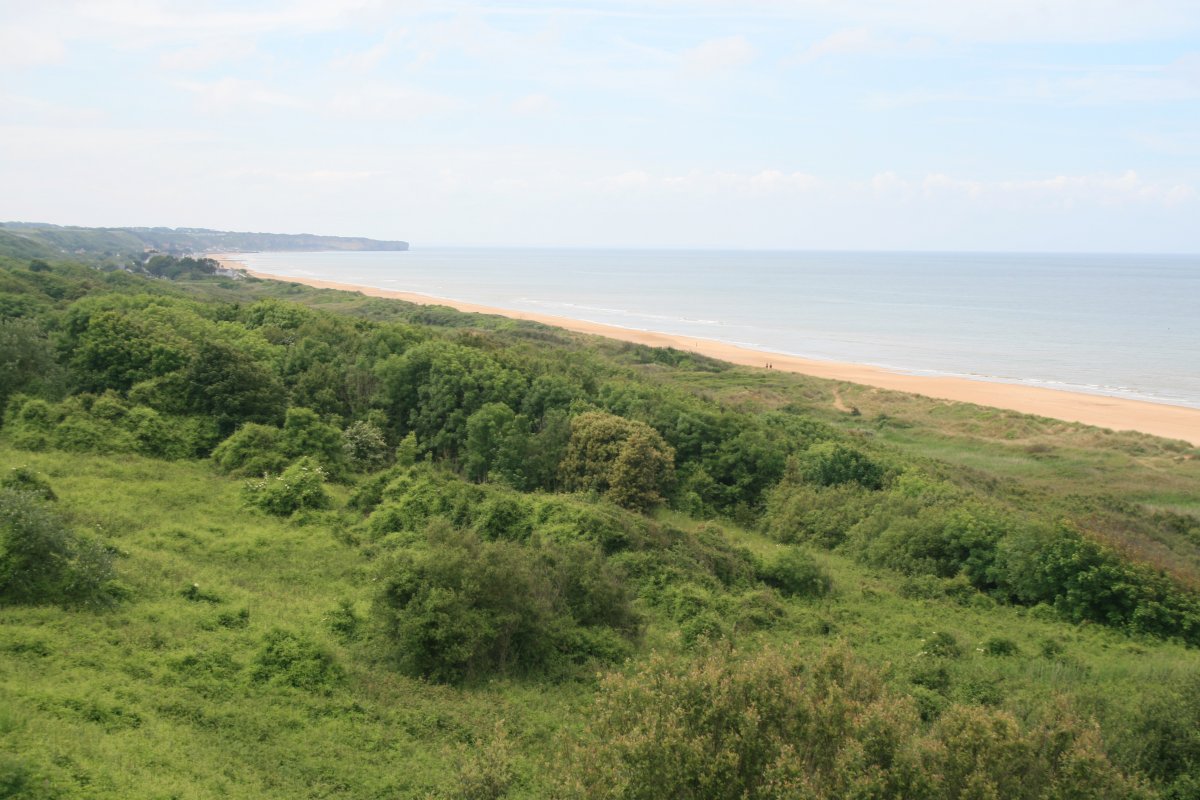 |
|
|
Looking east at the E-3 draw leading to Colleville-sur-Mer. The WN61 defense nest is close to the beach, on the other side of the draw, at the east end of Omaha Beach. It contained one of the "Concrete King Tigers", an R677 bunker with 88mm PaK gun, which faced westward. The picture is taken from the WN62 defense nest. As you can see, the E-3 draw was heavily defended.
Another Concrete King Tiger facing east was located on the opposite end of Omaha Beach, at WN72, at Vierville-sur-Mer. The 88mm guns provided a deadly crossfire across the entire landing area.
|
| |
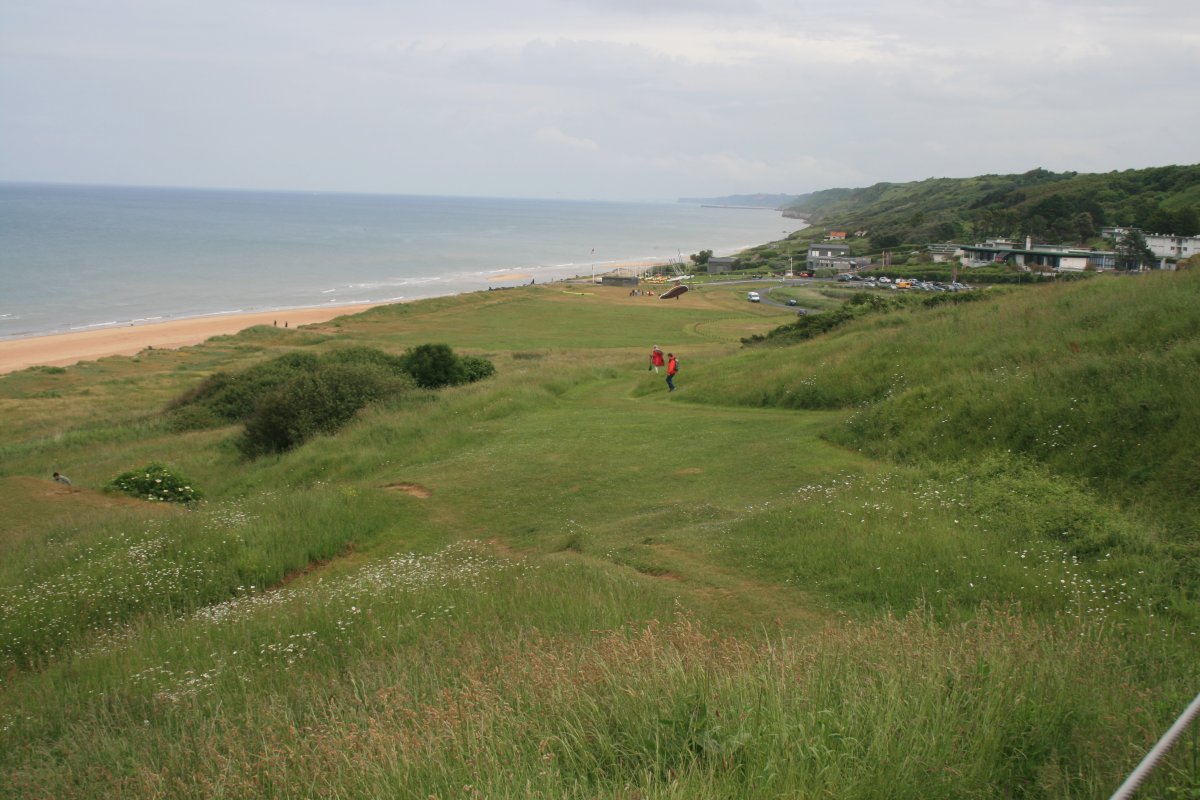 |
|
|
Looking straight down at the beach.
|
| |
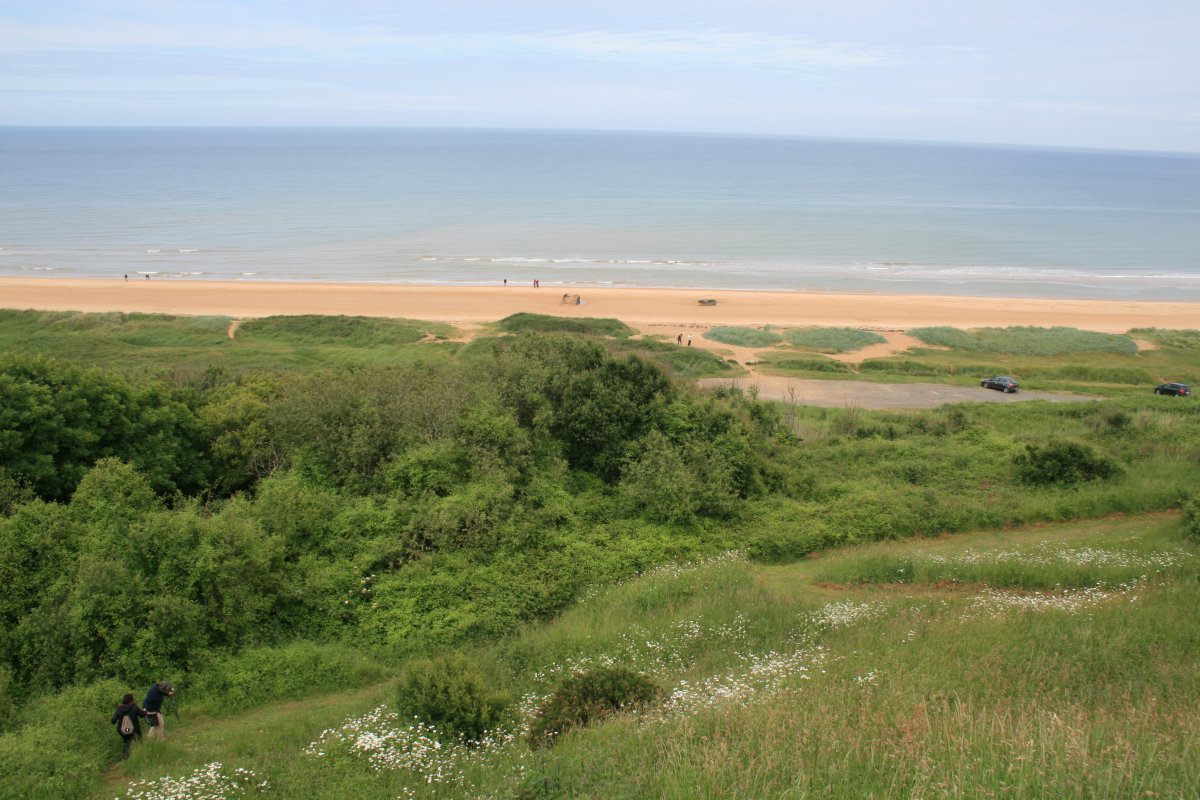 |
|
| I was amazed to discover this relatively intact gun bunker. Later I found out it was the upper German R669 gun bunker and part of defense nest WN62. Both gun bunkers contained Belgian 75mm guns. Throughout WWII, the Germans made extensive use of captured weapons and equipment. The 75mm was the standard field gun of the Belgian army in World War I. While not a modern field gun, it was still very lethal against exposed troops on the beaches below. Notice how the gun bunkers are open to the west, where they cover most of Omaha Beach, but are shielded from fire coming from the beach directly in front. |
| |
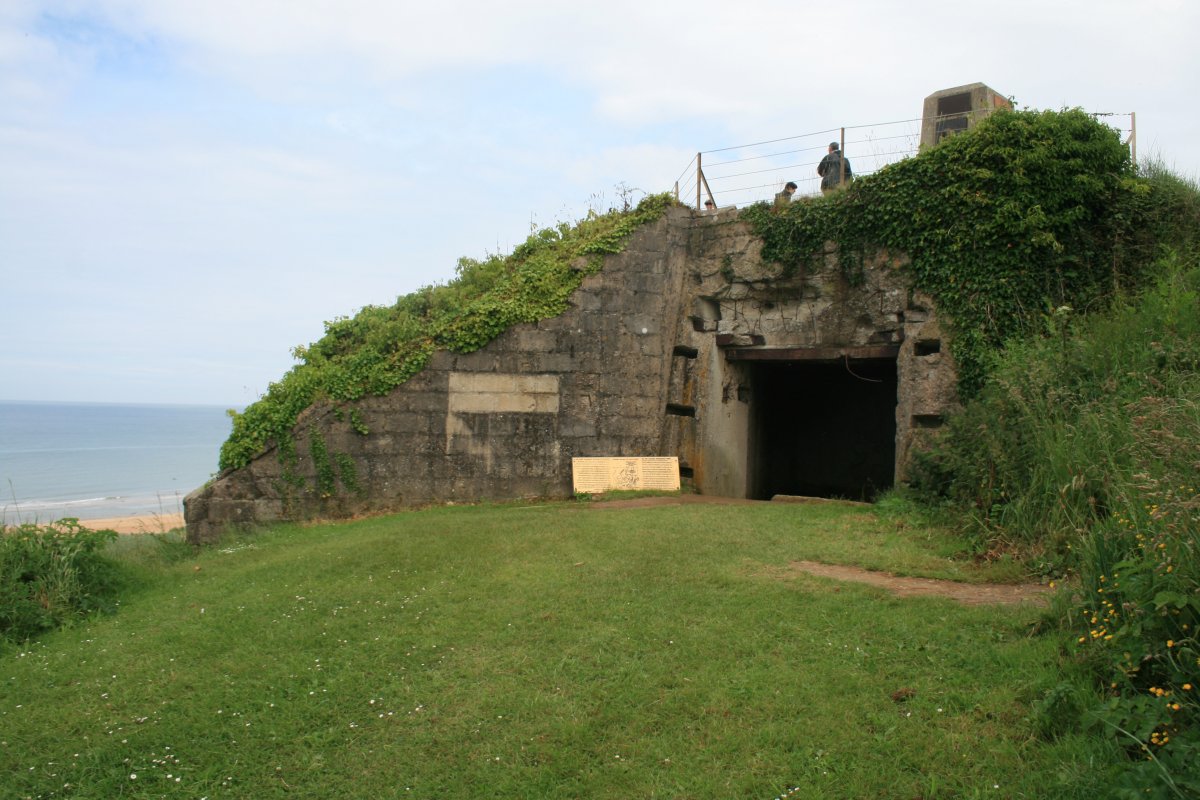 |
|
|
Down the hill a little was this second R669 bunker, also containing a Belgian 75mm gun.
I was surprised to learn that the construction of the German defenses at Normandy, and Omaha Beach in particular, were not started (and finished) until only a few months before D-Day. Even then, it only happened because of Rommel's personal intervention and energy. Rommel believed that the invasion had to be stopped on the beaches. Prior invasions at Sicily, Salerno and Anzio had showed him that once established ashore, the Allies could not be shoved off by the panzer divisions. Allied naval gunfire support was too strong. In fact, Rommel wanted to put a panzer division behind Omaha Beach and another one behind the British invasions beaches. Fortunately for the Allies, his request was denied.
|
| |
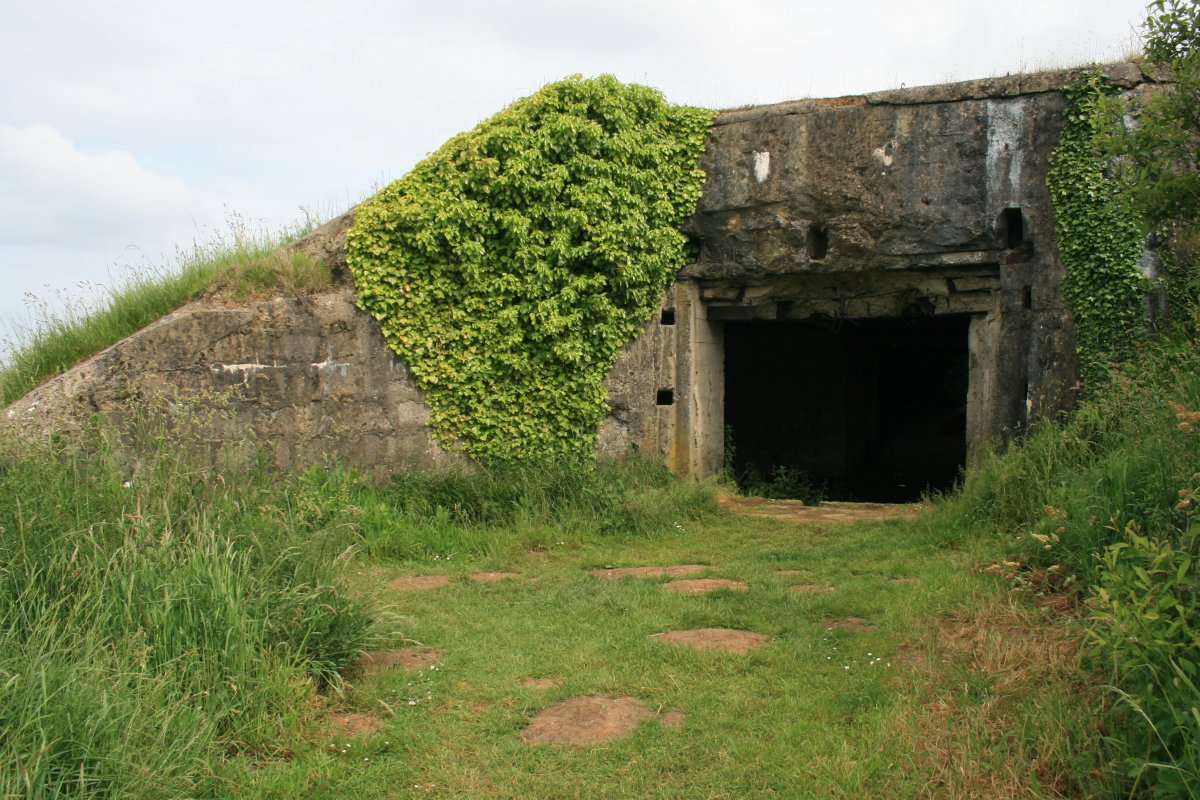 |
|
| Looking east down the beach towards Coville-sur-Mer. |
| |
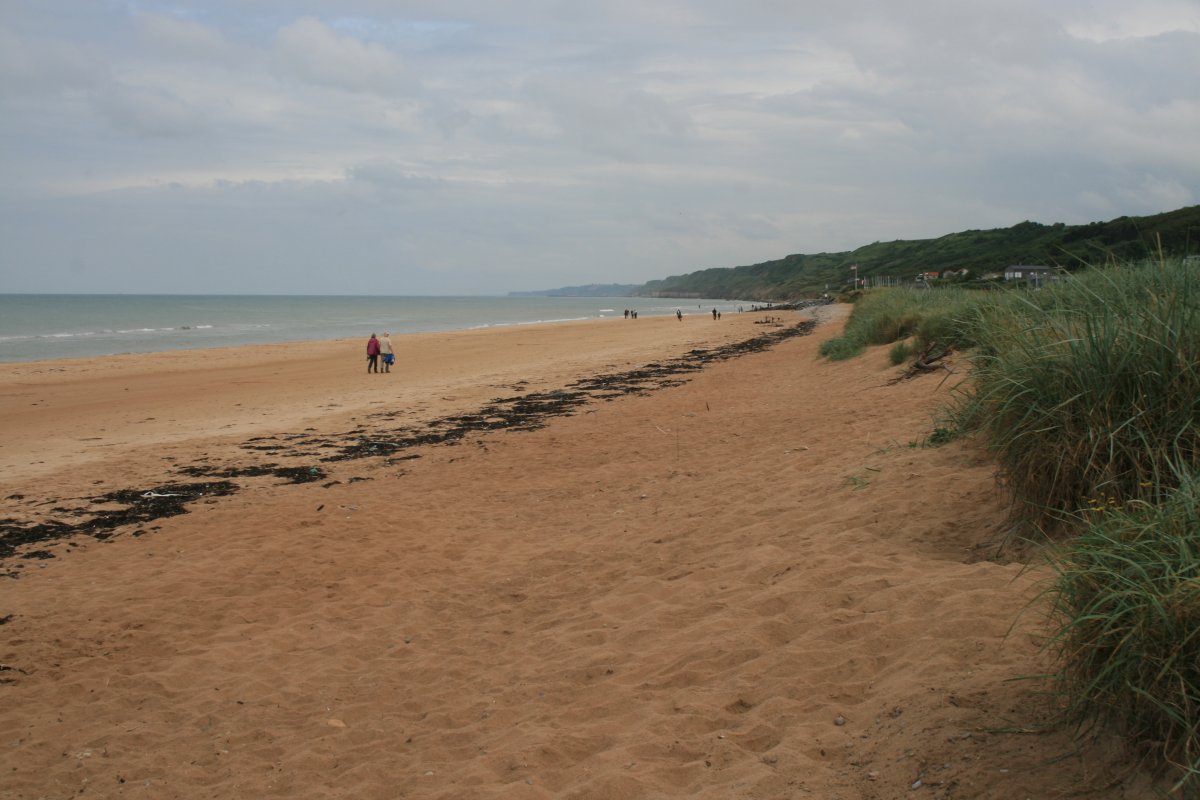 |
|
|
Looking up at the bluffs. The gun bunkers at left and center (with the memorial on top) are almost invisible from the beach. In addition to the two 75mm gun bunkers, the WN62 defense nest also included two 50mm pedestal guns, two 50-mm mortors and four machine-gun entrenchments, some in Tobruks (steel and cement foxholes). 31 German soldiers manned the weapons. Somewhere up there also is the observation bunker for the 352 Infantry Division's artillery.
The American soldiers were never able to get through these defenses per the plan. On their own initiative, small ad hoc groups finally got through up the sparsely defended but heavily mined hill to the right and then took WN61 and WN62 from the rear.
|
| |
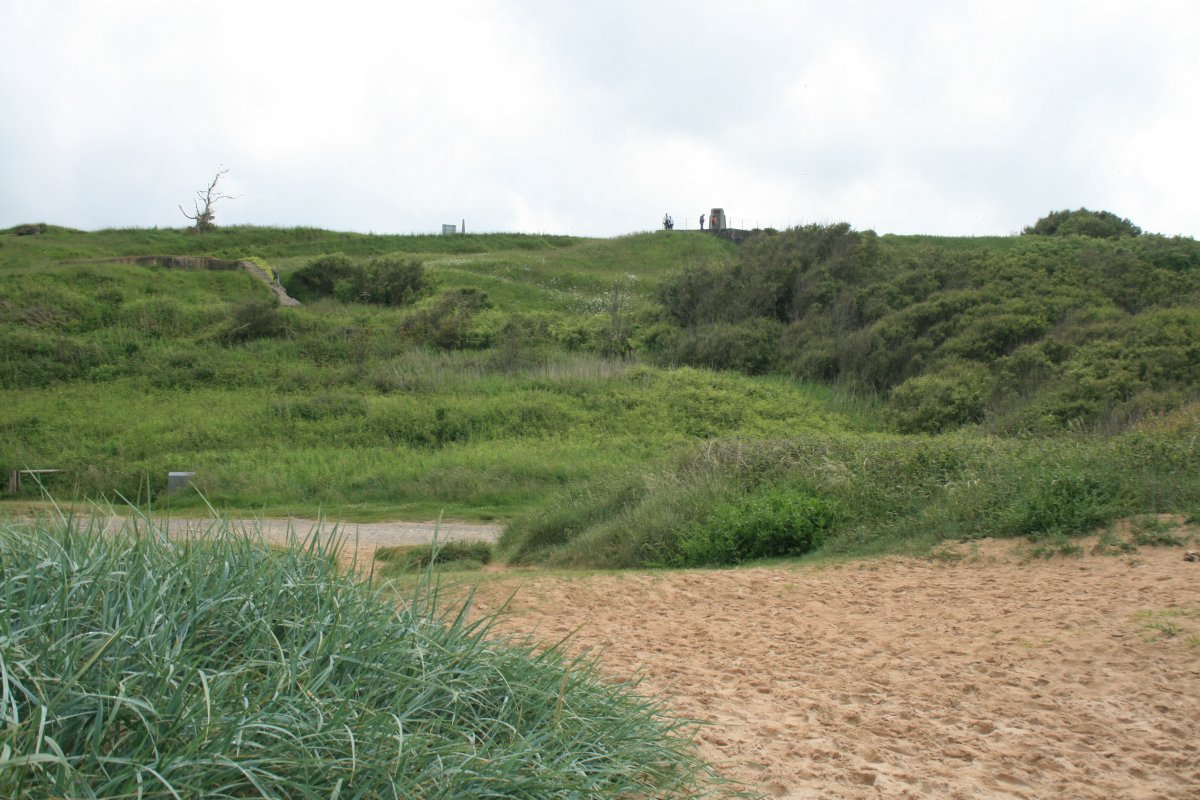 |
|
| Looking west. The entire Omaha beach was shorter than I expected. |
| |
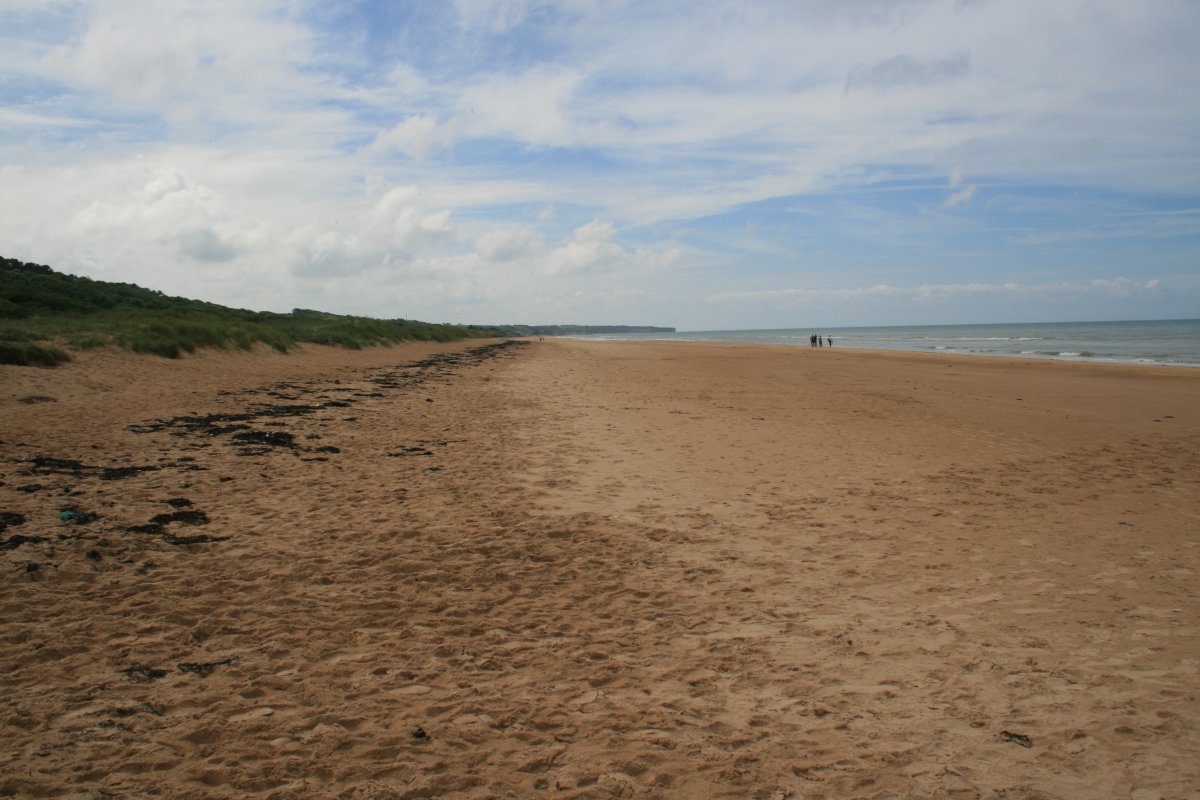 |
|
|
Another look back at the bluffs.
The concrete block may be a remnant from the Mulberry artificial harbor that was built here only to be destroyed in a violent storm a week later.
|
| |
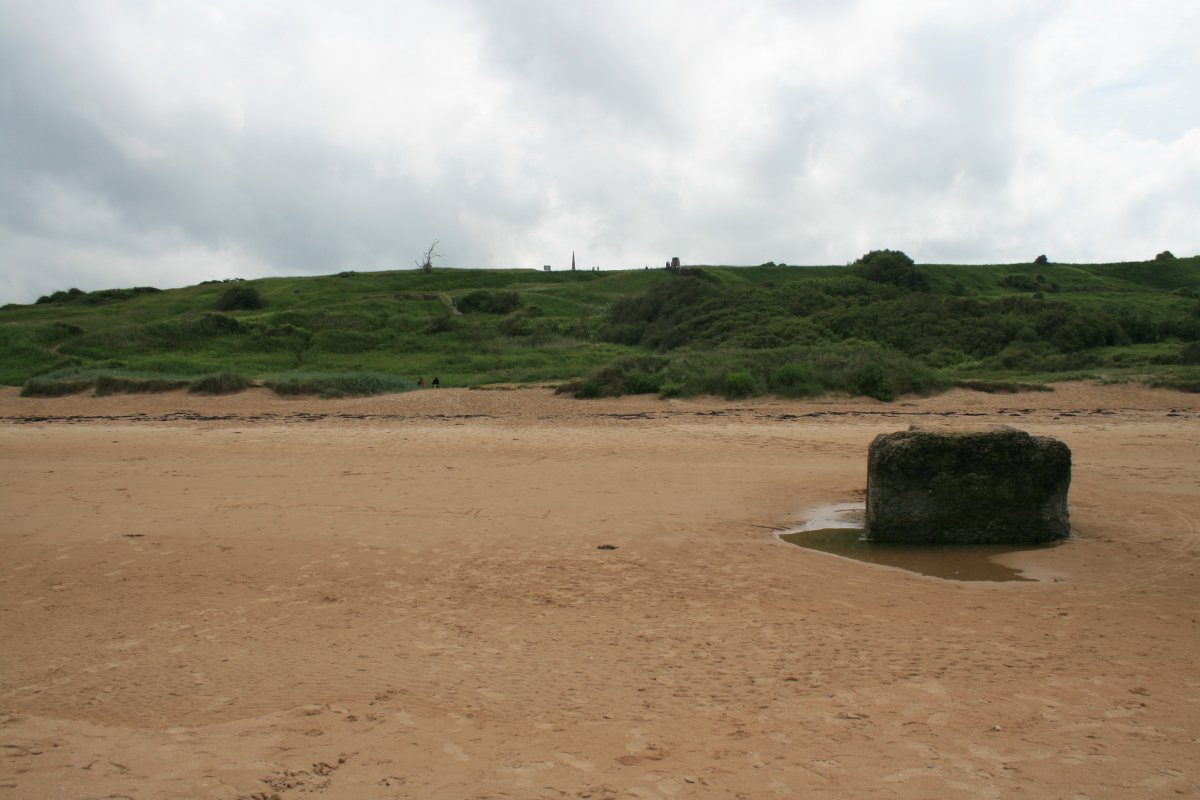 |
|
|
Looking at the Bluffs in the direction of the American Cemetery. These hills were heavily mined. But in the end, the brave American soldiers established a beachhead by climbing up these bluffs, avoiding the heavily defended draws, and getting to the German strongpoints from behind.
|
| |
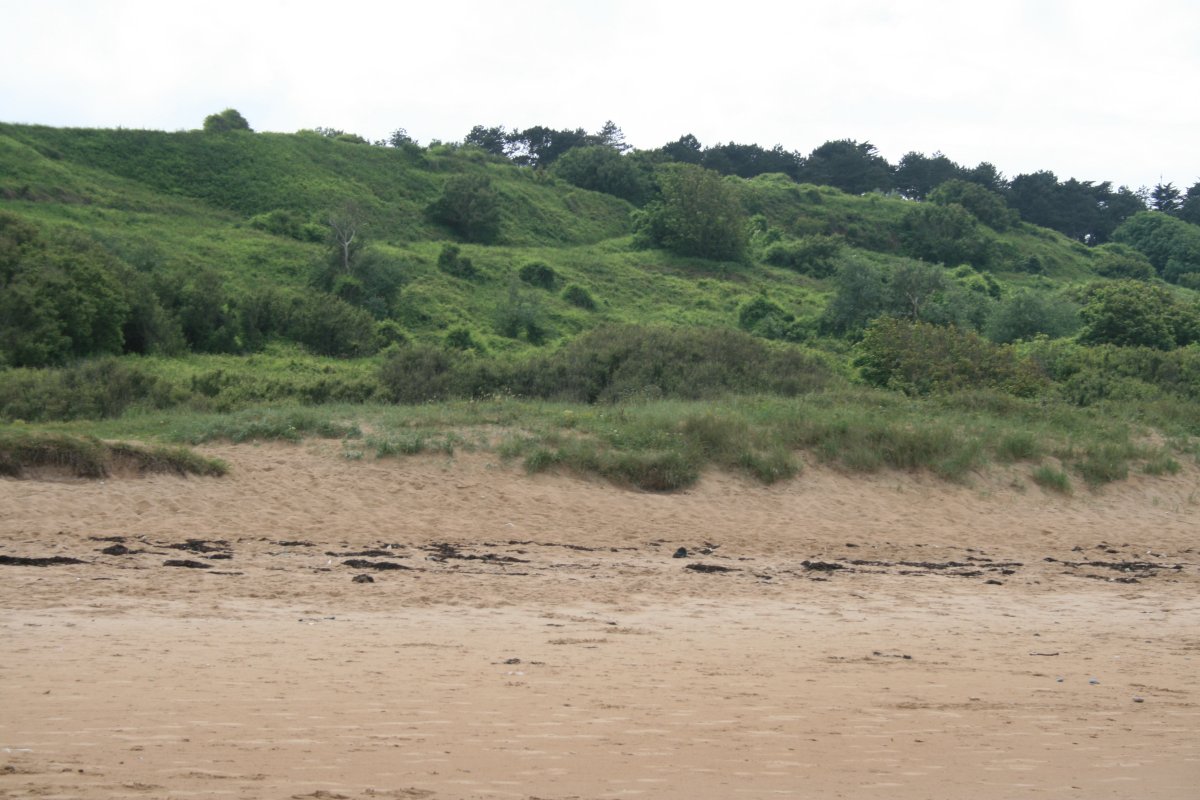 |
|
|
Lynnette taking it all in next to the memorial on top of a German gun emplacement.
|
| |
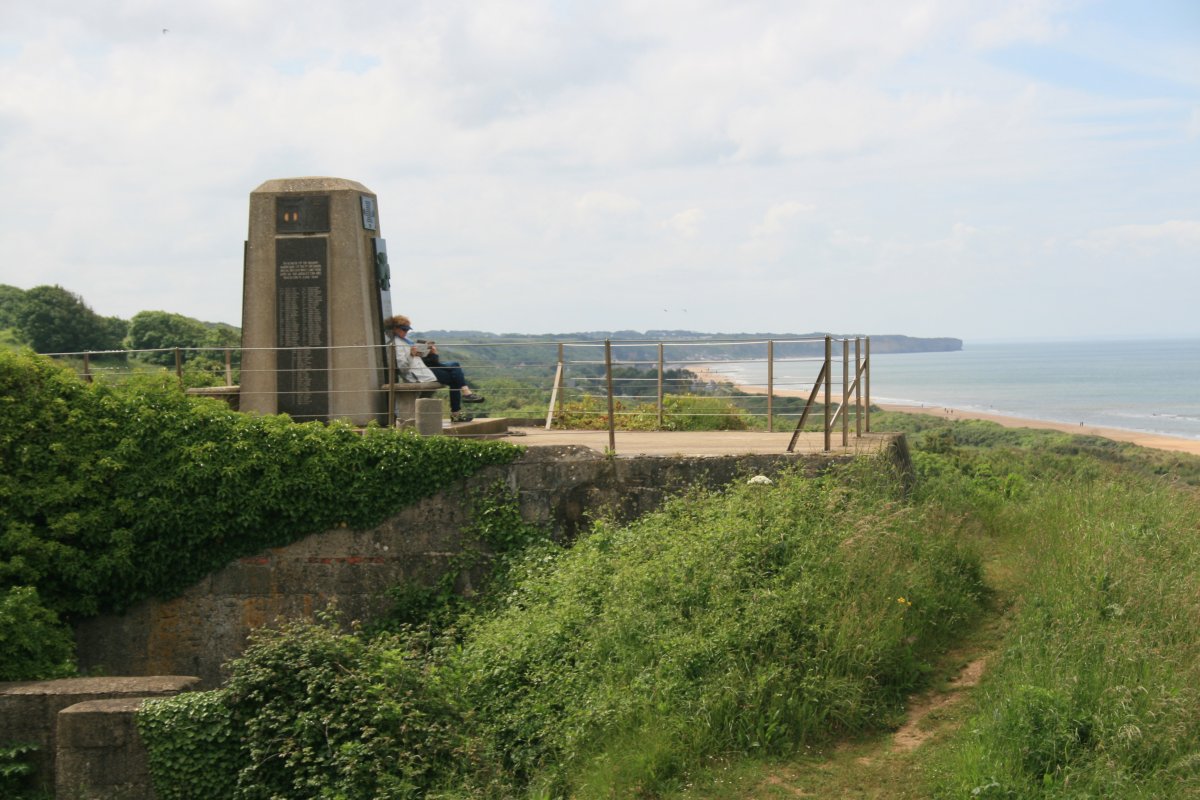 |
|
| On the east end of Omaha Beach, some of the shingle -- rock pebbles -- still remain. The shingle was along the entire Omaha Beach on June 6, 1944. |
| |
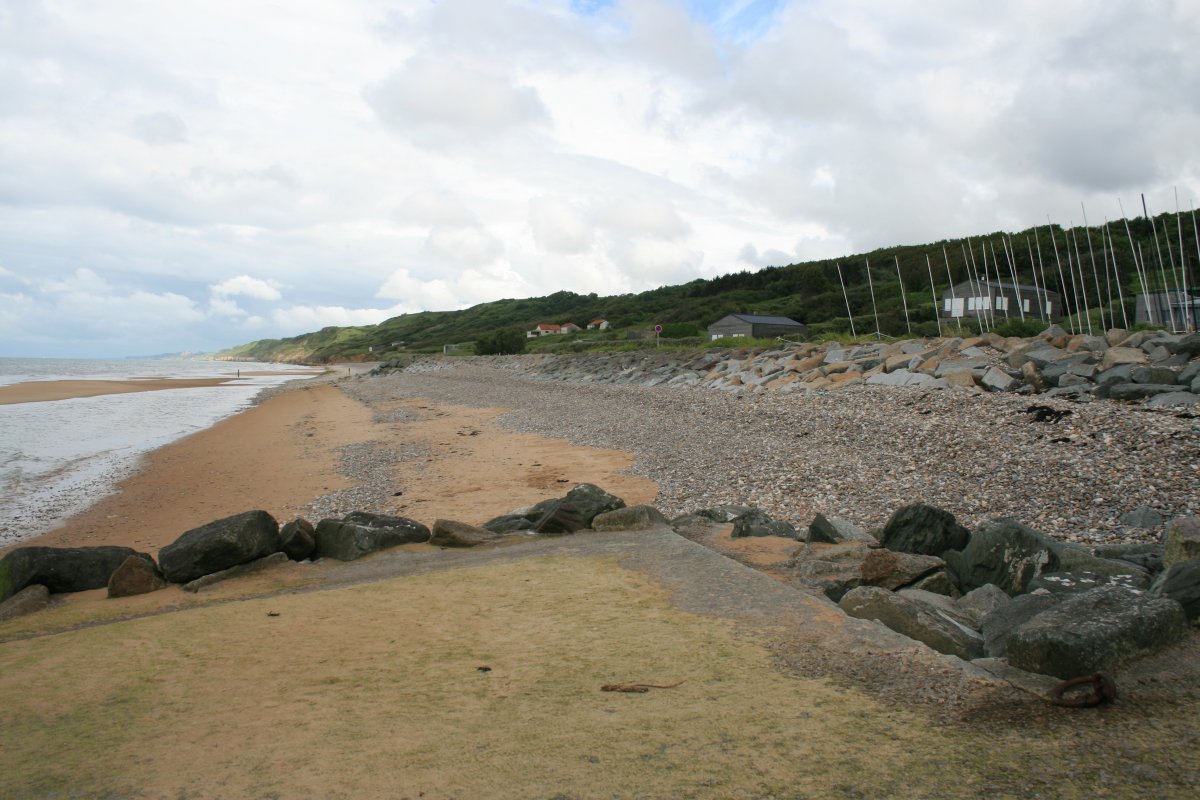 |
|
|
More about the shingle.
|
| |
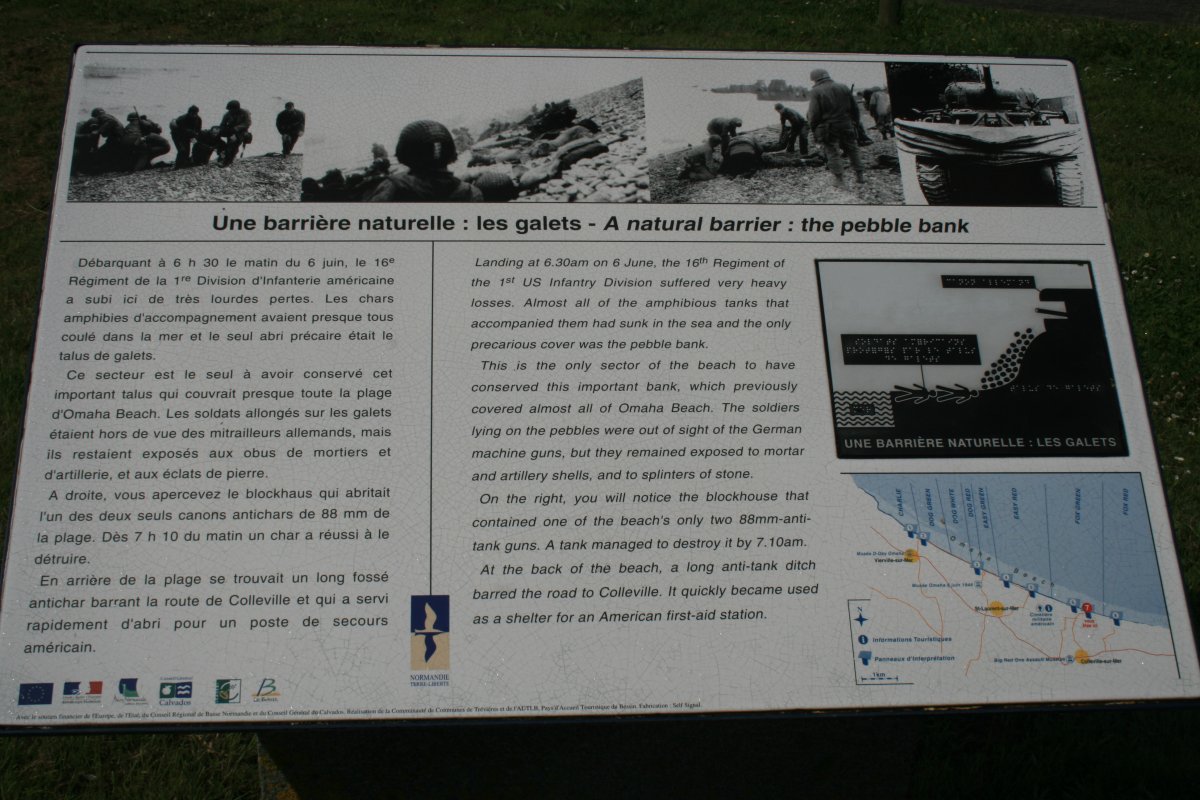 |
|
|
It's hard to believe such a momentous event in world history took place right here on this pretty beach.
|
| |
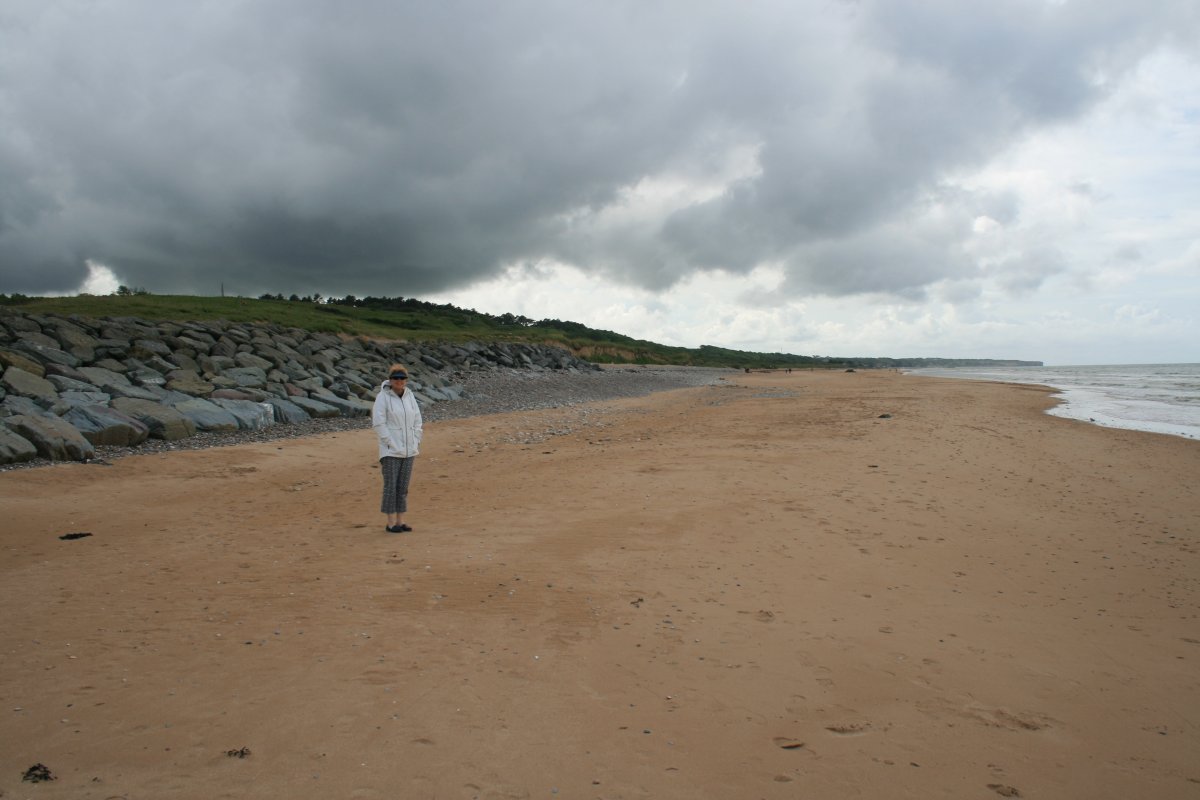 |
|
|
Answering his own question, why was Omaha Beach so bloody compared to the other D-Day beaches, Steve Zolaga concludes it was for three interrelated reasons: geography, the German strongpoints and obstacles (Devil's Garden), and German firepower advantages. "But ultimately, the emaciated state of the German Army in the summer of 1944 undermined its chances to stop the invasion."
|
| |
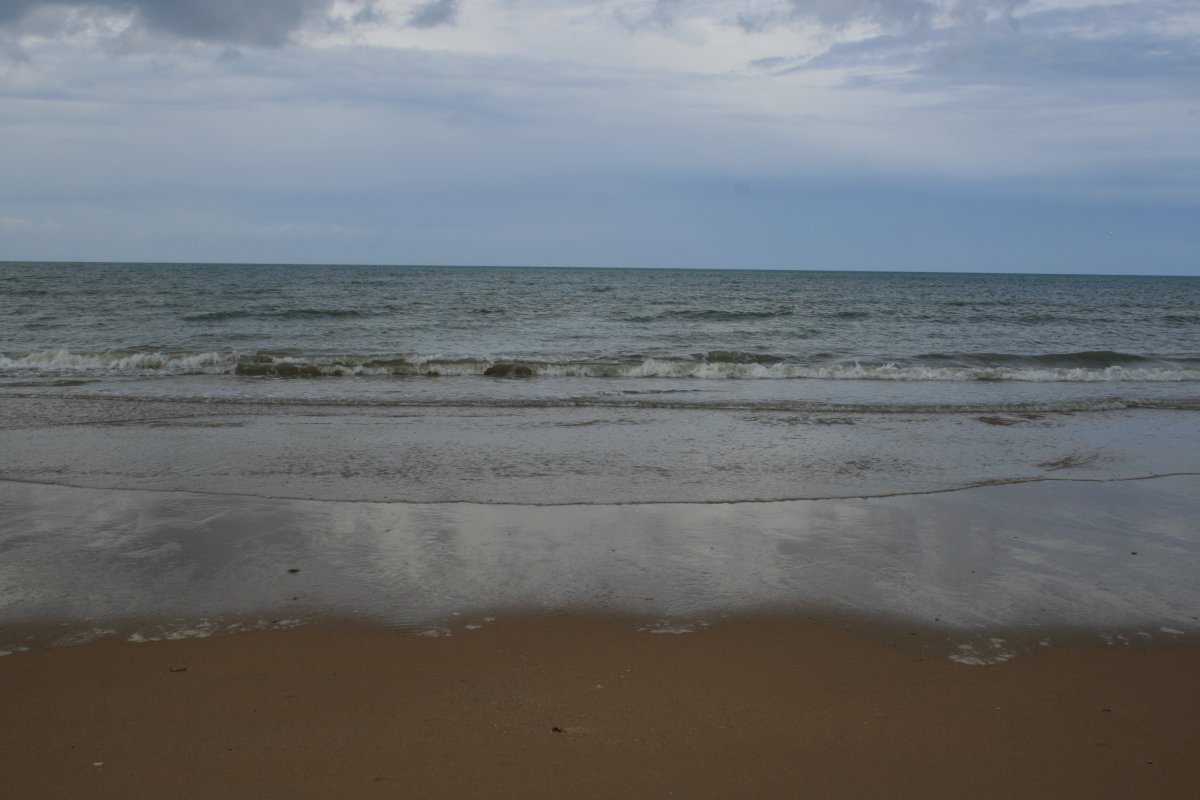 |
|
| |
| |
|
|
|
|
|
|




















